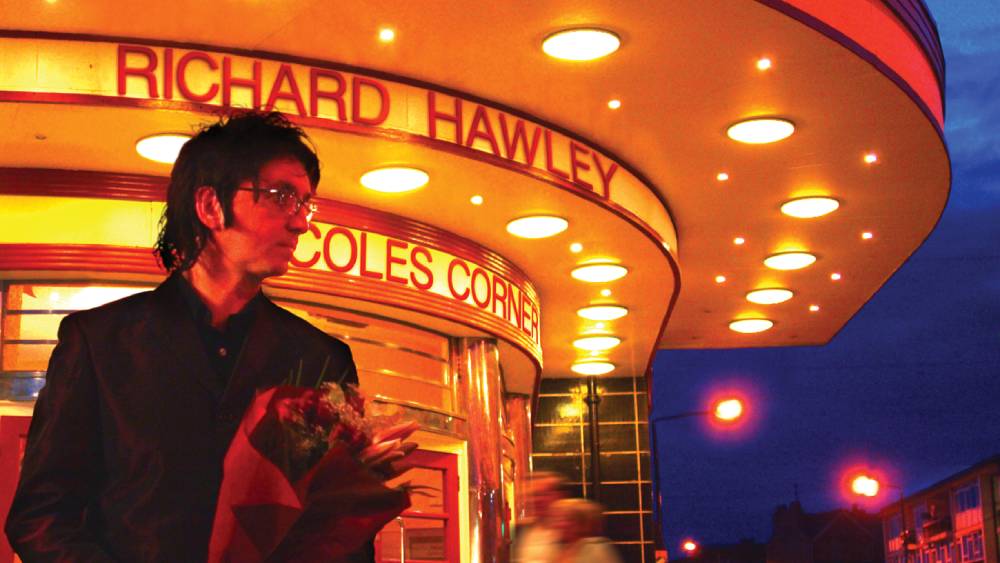‘I arrived in America as a songwriter and synth player at the perfect moment in music history. More and more artists were embracing these new, electronic sounds,’ Martin Page tells M. ‘But although it felt like we were making the future, I didn’t think I’d ever be this old talking about a song I wrote 40 years ago. It’s a bizarre but wonderful feeling.’
Martin’s musical life has certainly been well-lived. He’s worked with the likes of Tom Jones, Earth, Wind & Fire and Barbra Streisand, alongside tasting success with his own band, Q-Feel. With over four decades of experience under his belt, Martin is still going strong — the Southampton songwriter released his latest album, The First and Last Freedom, earlier this year.
‘I arrived in the US in 1983 on the back of Q-Feel’s record Dancing in Heaven, which was a hit. Within two weeks, I was playing keyboards on Ray Parker Jr.’s Ghostbusters,’ Martin recalls, highlighting yet another notable part of CV. ‘That [song] became massive. I thought to myself, “My god: America’s fantastic! You just go in the studio, put a few chords down with a cheap Casio and get a number one!”’
Martin already had a connection to the US thanks to his father, who was working there for British aerospace. ‘My dad had already made inroads in America, so it seemed easy to move,’ he adds. ‘I always had this love for American music, like Motown, funk and soul, so heading there seemed natural. My favourite artists, like The Doobie Brothers, Earth, Wind & Fire and Toto, were all connected to LA, and I wanted to learn from these greats.’
‘It felt like we were making the future.‘
At that time in the early 1980s, the recorded music industry was thriving. With artists clamouring to work with songwriters, writers like Martin could go to the big record companies, play their creations to the A&R and cross their fingers that those artists would take them on.
Martin’s first songwriting project after landing in LA was We Built This City, which he co-wrote with Elton John’s lyricist Bernie Taupin after the two were introduced by Martin’s publisher. Martin loved Elton’s music when he was younger, such as his 1973 album Goodbye Yellow Brick Road, so he jumped at the chance to work with Bernie.
‘Bernie was sent my album of synthesiser dance music, and I presumed he would hate it,’ Martin tells M. ‘But he shared these two sets of lyrics, These Dreams and We Built This City, by fax. I wrote and recorded both songs in a little rented home using a Fostex 8-track, and then nervously sent the tape back to him. After he heard the demo, he phoned me and just said, “Bernie Taupin comes into the 80s!” And off we went!
‘Everyone now knows We Built This City, but I never thought it would be successful,’ he adds. ‘I was just trying to please Bernie.’
We Built This City started life as a dark and somewhat funky electronic work, which Bernie later told Rolling Stone was ‘about how club life in LA was being killed off and live acts had no place to go’. After the demo fell into the hands of Austrian pop rock producer Peter Wolf, though, the track took on a new form and was eventually entrusted to radio-friendly rockers Starship.
‘Seeing the demo transform into a record was very exciting,’ Martin says. ‘Of course, Starship made our song extremely accessible. I remember when they recorded it, I went to the studio and didn’t like it. I just thought, “This is bombastic rock that I don’t understand”. But as I saw it leaping up the charts, it started to appeal to me a bit more.’
We Built This City hit number one in the US in November 1985 but didn’t crack the top 10 in the UK. Its moment in the sun in the latter chart, though, came about 33 years later through a surprising source: YouTuber LadBaby.
‘LadBaby recorded a version of it in 2018, We Built This City on Sausage Rolls,’ Martin explains of the charity cover, which raised money for the Trussell Trust. ‘It went to Christmas number one in the UK. As a kid, those festive hits were just so special to me, so for the track to get there was a huge thrill. It’s been a very good song to me.’
Martin and Bernie continued writing together for nearly five years after We Built This City. The aforementioned These Dreams, initially written for Stevie Nicks and called Boy In The Mist, gave the pair their second number one in March 1986 when it was released by Heart. ‘[Working with Bernie] was a great education,’ Martin says now.
Technology has always driven the music industry forward, with the art of songwriting continually being reshaped by new creative tools.
‘Everything is in a state of flux: when I first appeared on the scene, synths and studios were changing,’ Martin says on the topic. ‘As songwriters, we need to be aware of how tech is manipulating us yet also stay soulfully connected to it. Having reverence for songwriting when I was starting out was key: every record I bought, I studied it. It was all I lived for.
‘With songwriting, you’re doing something that heals people; makes them cry; makes them laugh. You’re a powerful creative — despite the challenges, try to retain that. Ask yourself, “How you would feel without writing music?” If you wouldn’t be able to cope, then that likely means you’re in the right creative space and you need to carry on.’
One aspect of songwriting that Martin has always thrived in is collaboration. His advice for building that winning rapport in the studio? Be a fan of the co-writers and artists you work with.
‘I always felt nervous collaborating — and still do! — but the secret is to prepare,’ he says. ‘I was such a fan of records. Growing up, my best friend was vinyl. When I was younger, it felt like I lived with all these artists I ended up writing with. So I’d always invest time in preparing. I couldn’t imagine sitting in a room with someone and not having anything to offer.’
‘With songwriting, you’re doing something that heals people, makes them cry, makes them laugh.‘
Martin has long felt the benefits of his PRS membership, noting how signing up to the society after signing to Jive Records in 1980 ‘made us immediately feel like professionals’.
‘It just made you feel like you were part of a bigger family,’ he continues. ‘Those first royalty statements weren’t much in the way of money, but they came to you in an envelope with your name on it and it felt special. You’re often on your own as a songwriter — you lose managers, co-writers, labels — so PRS was a solid organisation for me.’
The latest chapter in Martin’s musical journey is The First And Last Freedom. Written and recorded over the course of seven years, the record was born out of a sense of loss — including the grief Martin felt following the passing of his friend and session drummer Jimmy Copley in 2017 — but became ‘an album of hope’.
‘The whole record was written as a letter to my friends,’ he explains. ‘We’re at that age where grief surrounds us, but it’s not depressing. There’s a lot of soul in the record, and I couldn’t be prouder of it. I’m singing the best I’ve sung: you lose octaves as you get older, but you get more richness.
‘Ultimately, I’m really proud of it, and it’s for my dear mates.’
Martin Page’s album The First And Last Freedom is out now.





